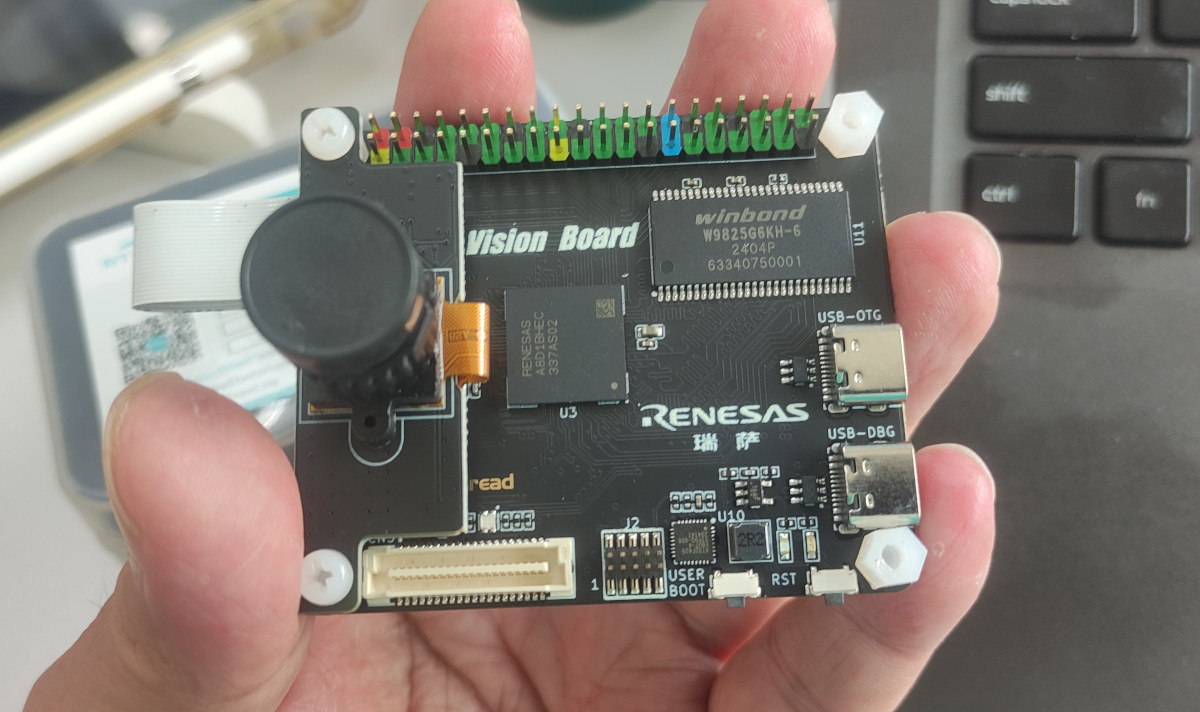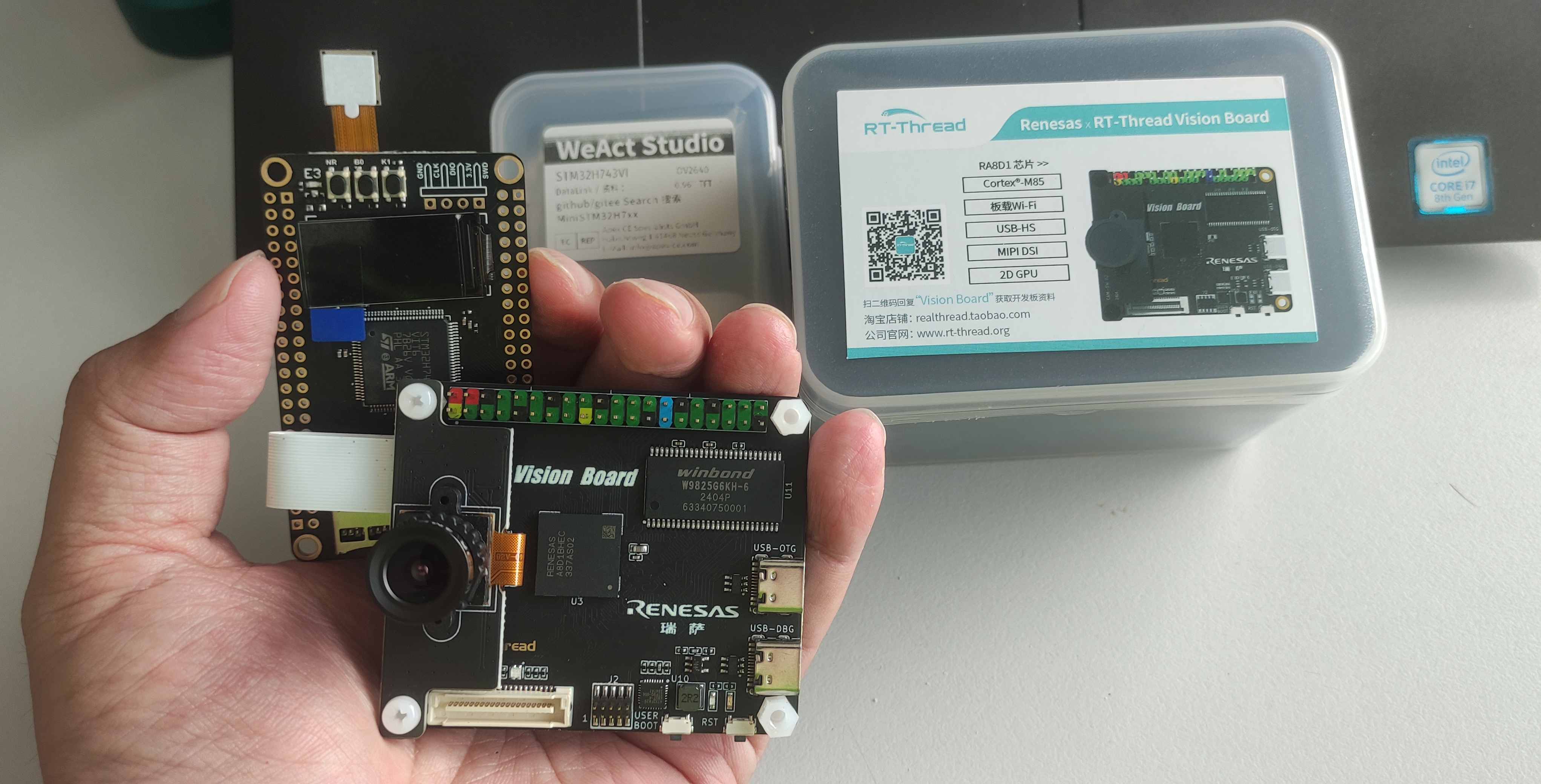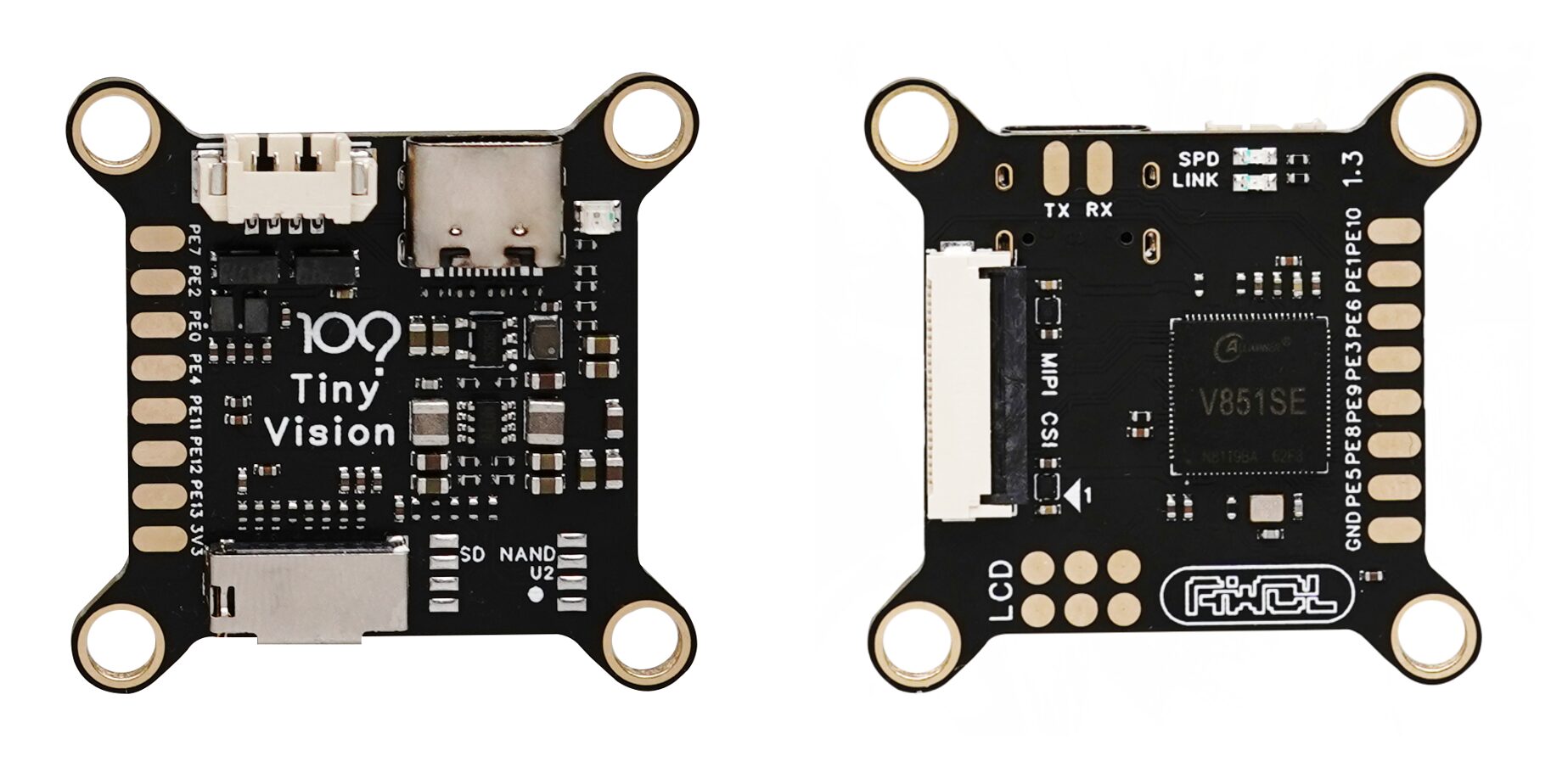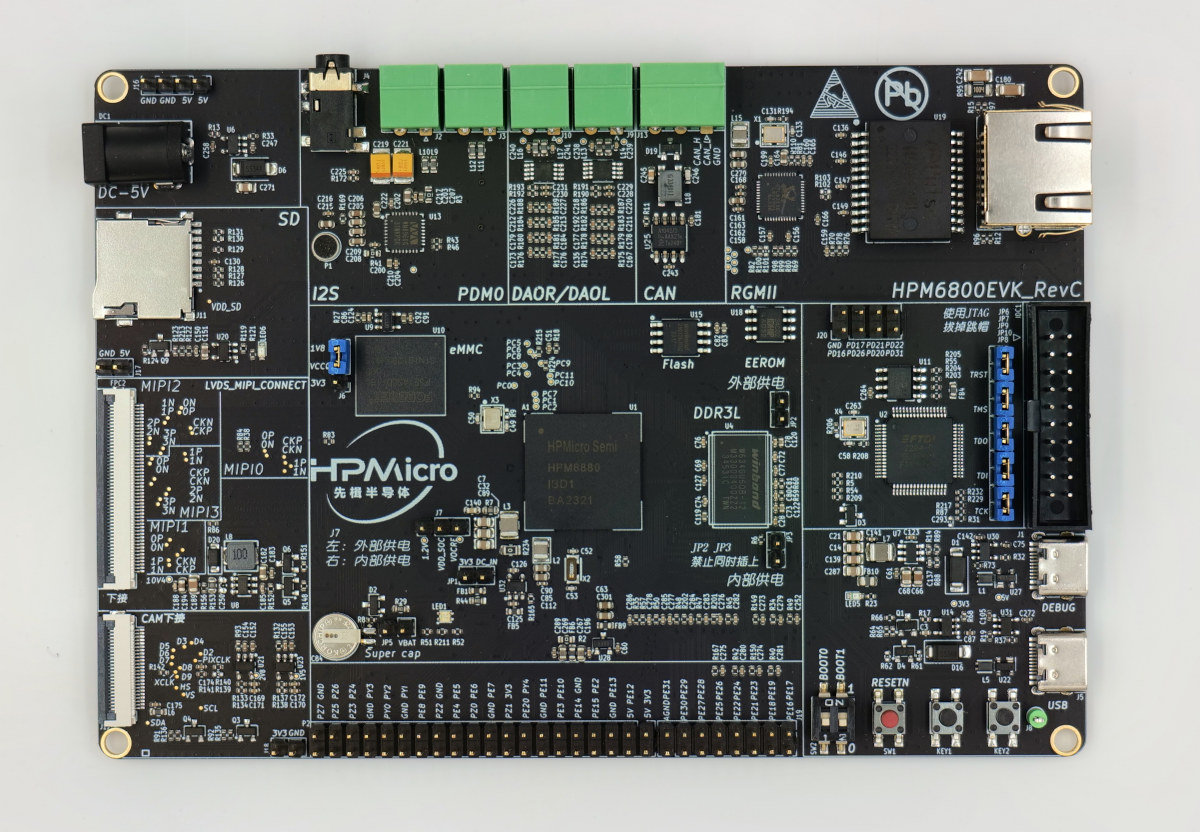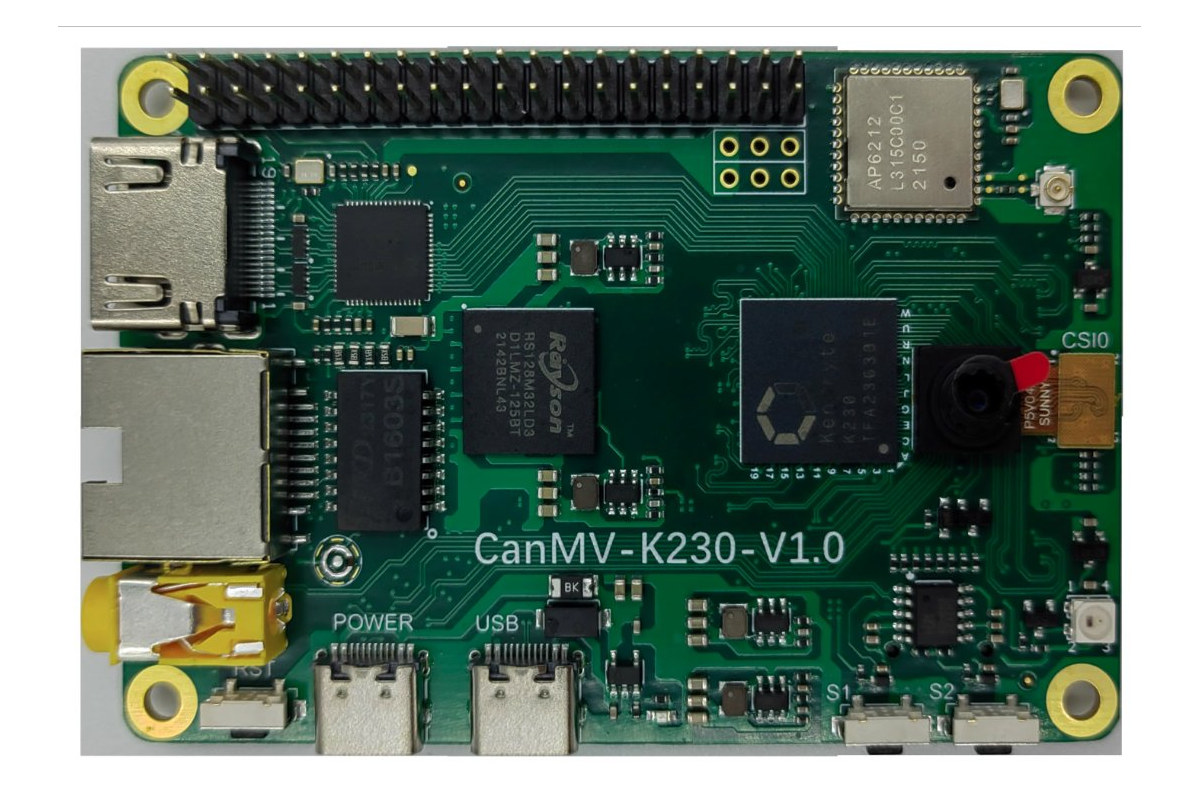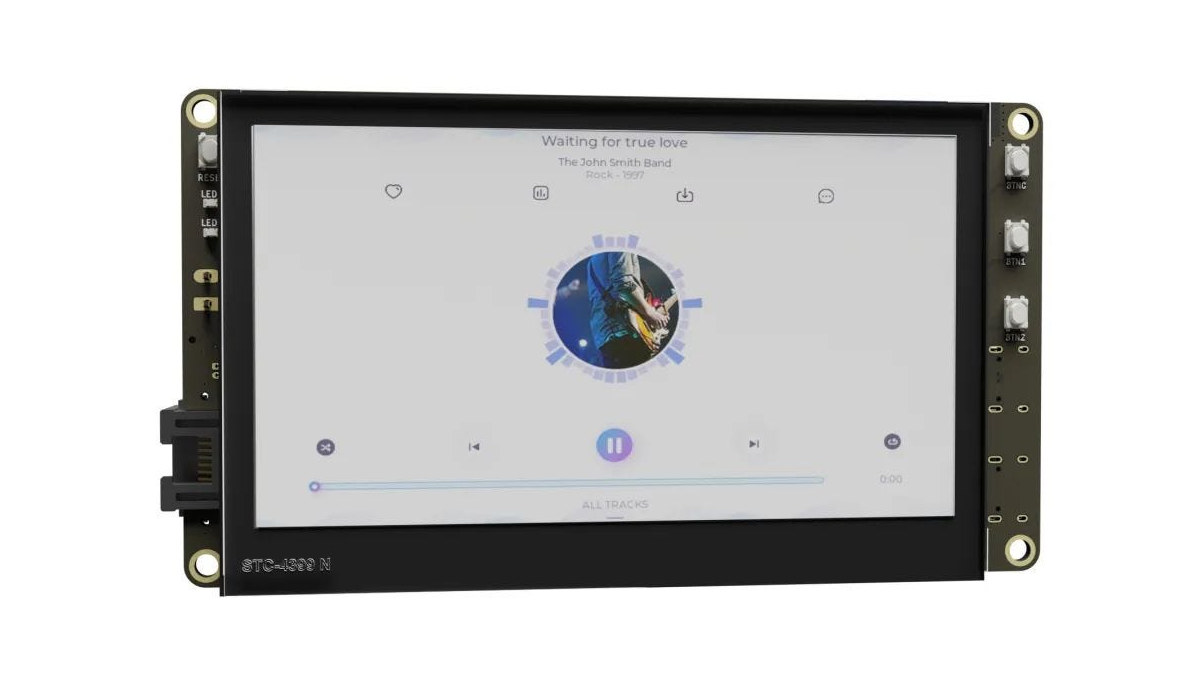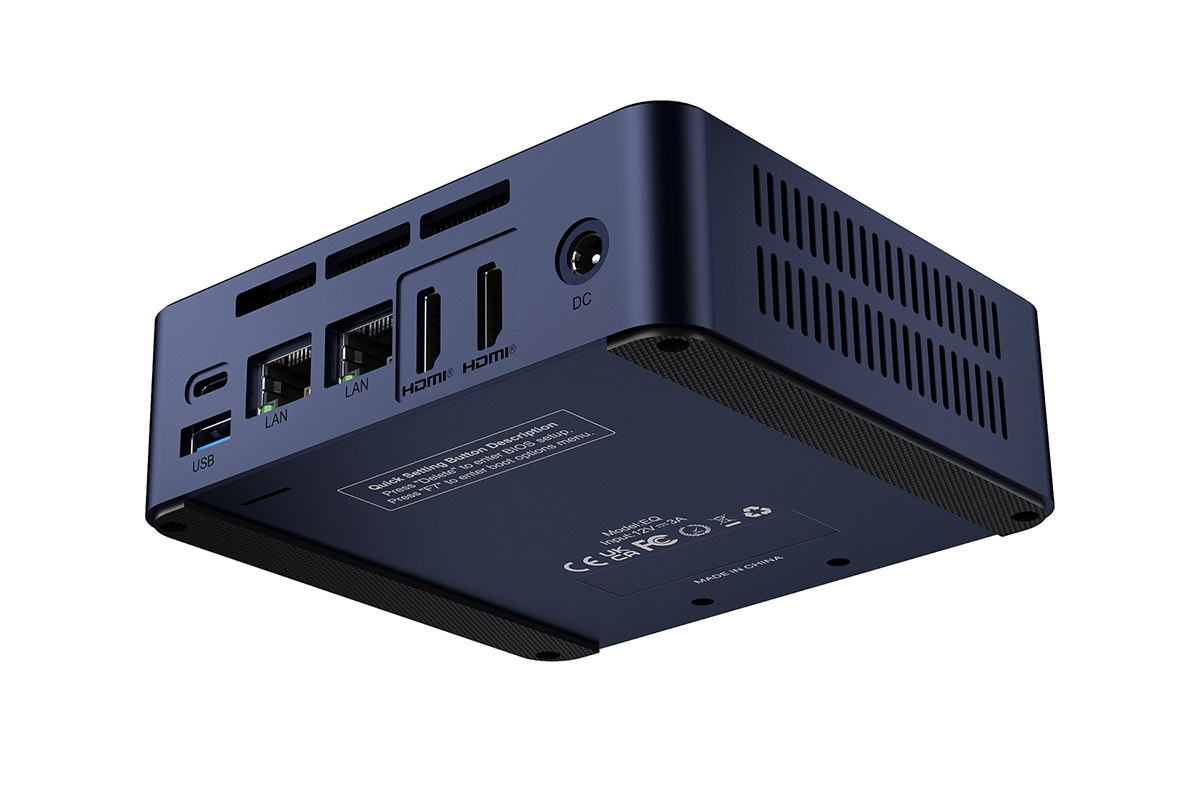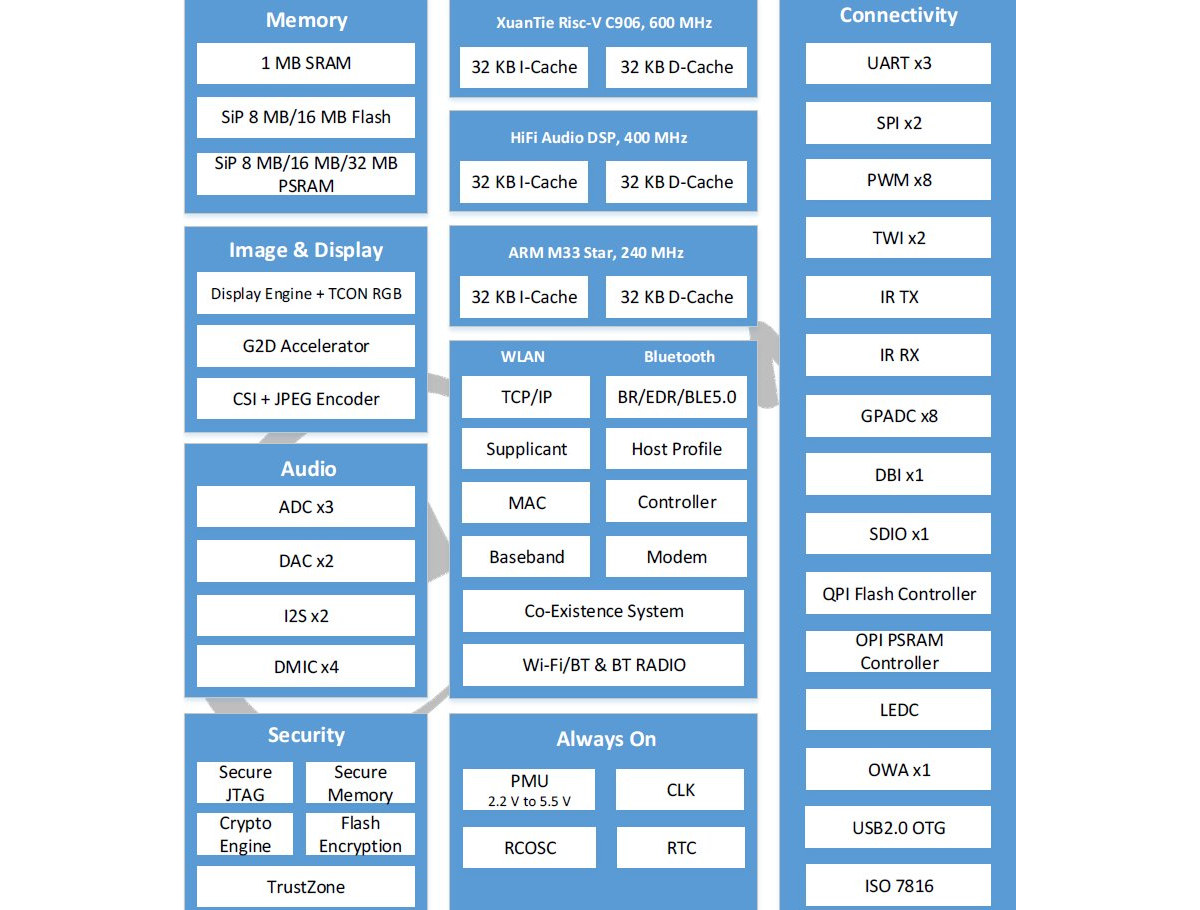It’s already Friday, and the fifty prize of CNX Software’s Giveaway Week 2024 will be the RT-Thread Vision board equipped with a Renesas RA8D1 Arm Cortex-M85 microcontroller, a camera, an optional LCD display, and a 40-pin GPIO header. The board is used as an evaluation platform for the Renesas RA8D1 MCU and RT-Thread real-time operating system. As its name implies, it’s mainly designed for computer vision applications leveraging the Helium MVE (M-Profile Vector Extension) for digital signal processing (DSP) and machine learning (ML) applications. I haven’t reviewed it myself and instead, received two samples from RT-Thread who sent them to me by mistake, so I’ll give them away here and on the Thai website. But it was reviewed by Supachai who tested the RT-Thread Vision board with OpenMV and ran a few benchmarks last June. The Helium MVE did not seem to be utilized in OpenMV at that time (June […]
RT-Thread Vision board review – Part 1: OpenMV on Renesas RA8D1 Cortex-M85 microcontroller
I am always interested in real-time operating systems (RTOS) for microcontrollers (MCUs) with my past backgrounds in µC/OS-II, mbed, and FreeRTOS. When the opportunity arose to get my hands on the RT-Thread Vision Board, thanks to the RT-Thread team and CNX Software, I was excited to check it out. This board, a collaboration between RT-Thread and Renesas, packs a powerful Renesas RA8D1 Cortex-M85 MCU and comes pre-loaded with OpenMV firmware. OpenMV’s MicroPython engine lets you jump right into embedded vision development, perfect for experimenting with computer vision tasks. But the real power lies in RT-Thread’s ability to handle tasks very quickly, which we’ll explore with C/C++ development in part two. This first part will focus on getting you familiar with the hardware using the OpenMV firmware, making it a smooth entry point for beginners. Plus, I have a collection of other Renesas evaluation boards, so you can bet I’ll be […]
TinyVision is a compact Allwinner V851S/V851S3-powered Linux board for vision-based applications
Unrelated to tinyVision.ai, the TinyVision development board is a computer vision board from Chinese developer YuzukiTsuru powered by either the Allwinner V851S or the V851S3 and is billed as an “ultimate all-in-one solution for Linux motherboards, IPCs, servers, routers, and more.” It packs features such as a Cortex-A7 core running at 1200MHz, a 2-channel MIPI CSI input, and an independent image signal processor (ISP) capable of a maximum resolution of 2560 x 1440 in a compact form factor. TinyVision specifications: Processor – Allwinner V851SE / V851s3 with Cortex-A7 core @ 1200MHz and RISC-V E907GC core @ 600MHz NPU: 0.5TOPS (tera operations per second) @ INT8 precision Memory – 64MB DDR2 (V851se), 128MB DDR3L (V851s3) Storage – MicroSD card slot (supports UHS-SDR104), onboard SD NAND via SPI Display – 2-lane MIPI DSI (1280 x 720 @ 60fps), RGB LCD (320 x 240 @ 60fps) Video Input ISP with a maximum resolution […]
HPMicro HPM6800 600 MHz RISC-V MCU comes with a Vivante 2.5D GPU with OpenVG support
HPMicro HPM6800 is a family of high-end RISC-V microcontrollers clocked up to 600 MHz integrating a VeriSilicon Vivante 2.5D GPU with support for the OpenVG 1.1 vector graphics API, and peripherals making it suitable for digital dashboard displays and human-machine interfaces (HMI). The family is comprised of three parts: the HPM6830 without video support, the HPM6850 with 2D graphics and video input/outputs, and the HPM6880 adding support for the 2.5D OpenVG GPU from VeriSilicon. All variants come with 1064KB SRAM, support for external DDR2/DDR3/DDR3 memory, NOR, PSRAM and eMMC flash, audio interfaces, and a range of peripherals with eight CAN FD interfaces, gigabit Ethernet, USB high-speed, and many more. HPMicro HPM6800 specifications: CPU – Single core 32-bit RISC-V (RV32-IMAFDCP) processor @ 600MHz with 32KB I/D Cache (3390 CoreMark) Memory 1064 KB SRAM with 256KB ILM + 256KB DLM in the RISC-V core, 512KB AXI SRAM, 32KB AHB SRAM, and 8KB […]
CanMV-K230 AI development board features Kendryte K230 dual-core 64-bit RISC-V processor
CanMV-K230 is a credit card-sized development board for AI and computer vision applications based on the Kendryte K230 dual-core C908 64-bit RISC-V processor with built-in KPU (Knowledge Process Unit) and various interfaces such as MIPI CSI inputs and Ethernet. The first Kendryte RISC-V AI processor was launched in 2018 with the K210 which I tested with the Grove AI HAT and Maixduino board and found fun to experiment with, but noted that performance was limited. Since then the company introduced the K510 mid-range AI processor with a more powerful 3 TOPS AI accelerator, and the K230 entry-level successor to the K210 – which was planned for 2022 in a 2021 roadmap – has now just been launched and integrated into the CanMV-K230 development board. CanMV-K230 specifications: SoC – Kendryte K230 CPU 64-bit RISC-V processor @ 1.6GHz with RISC-V Vector Extension 1.0, FPU 64-bit RISC-V processor @ 800MHz with support for […]
$25 Renesas “HMI Board” features RA6M3 microcontroller for RT-Thread & LVGL development
The Renesas HMI board is a Renesas RA6M3 Cortex-M4F development board with a 4.3-inch LCD developed in collaboration with the teams behind the RT-Thread RTOS project and LVGL open-source graphics library. Besides a color display for HMI (Human Machine Interface), the board also features a microSD card for data storage, Ethernet and WiFi connectivity, Arduino headers and PMOD connectors for expansion, a microphone and a speaker, a CAN bus terminal block, and two USB-C ports for debugging and power. Renesas HMI board specifications: MCU – Renesas RA6M3 (R7FA6M3AH3CFB) Arm Cortex-M4F microcontroller @ 120MHz with 2MB Flash, 640KB RAM, TFT controller, 2D accelerator, and JPEG decoder. Storage – MicroSD card slot Display – 4.3-inch LCD (RGB 888) Audio – Microphone and speaker Networking Low-profile 10/100M Ethernet RJ45 port RW007 SPI WiFi module by Shanghai Ruiside Electronic Technology USB – 2x USB Type-C ports Serial – 2-pin CAN bus terminal block Expansion […]
Beelink EQ12 mini PC features Processor N100 “Alder Lake-N” CPU, up to 16GB RAM
Beelink EQ12 is a mini PC powered by an Intel Processor N100 “Alder Lake-N” quad-core processor offered with 8GB or 16GB DDR5 memory, a 512GB NVMe SSD for storage, as well as two 2.5GbE ports, and a WiFi 6 & Bluetooth 5.2 wireless module. The actively cooled computer also comes with two 4K capable HDMI ports, three USB 3.2 ports, and a 10Gbps USB Type-C that also supports DisplayPort Alternate Mode enabling the EQ12 to drive up to three 4K displays. Beelink EQ12 specifications: SoC – Intel Processor N100 Alder Lake-N quad-core processor @ up to 3.4 GHz (Turbo) with 6MB cache, 24 EU Intel HD graphics @ up to 750 MHz; TDP: 6W System Memory – 8GB or 16GB DDR5 4800 MHz RAM Storage 500GB M.2 2280 NVMe SSD upgradeable up to 2TB Support for 2.5-inch SATA SSD / HDD (CNXSoft: not shown in the specs, but a “scalable […]
Allwinner R128 wireless SoC features 64-bit RISC-V core, Arm Cortex-M33 core, and HiFi 5 audio DSP
Allwinner is mostly known for its low-cost Arm processor running Android or Linux, but the Allwinner R128 is a wireless audio SoC with a C906 64-bit RISC-V application core, an Arm Cortex-M33 real-time time core, a HiFi 5 DSP, and built-in WiFi and Bluetooth connectivity. The SoC also comes with 1MB SRAM, up to 16MB flash, up to 32MB PSRAM, display and camera interfaces, support for microphone arrays, and plenty of I/Os that should make it suitable for smart speakers and other voice-controlled home appliances with or without display. Allwinner R128 specifications: Application core – Xuantie C906 64-bit RISC-V core clocked at 600 MHz. DSP – Cadence HiFi 5 audio DSP clocked at 400 MHz Communication core – Arm M33 Star (Cortex-M33 from Arm China?) core clocked at 240 MHz with Trustzone support Memory 1MB SRAM 8MB, 16MB, or 32MB PSRAM (SiP = System-in-Package) OPI PSRAM controller Storage QPI flash […]


